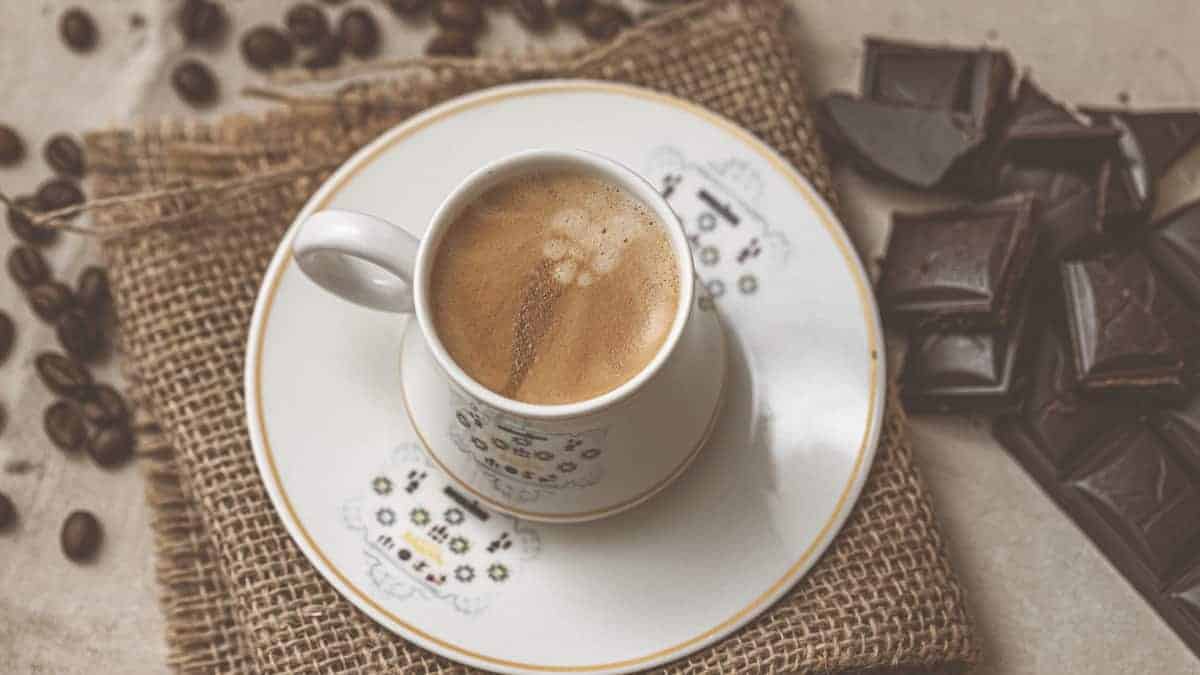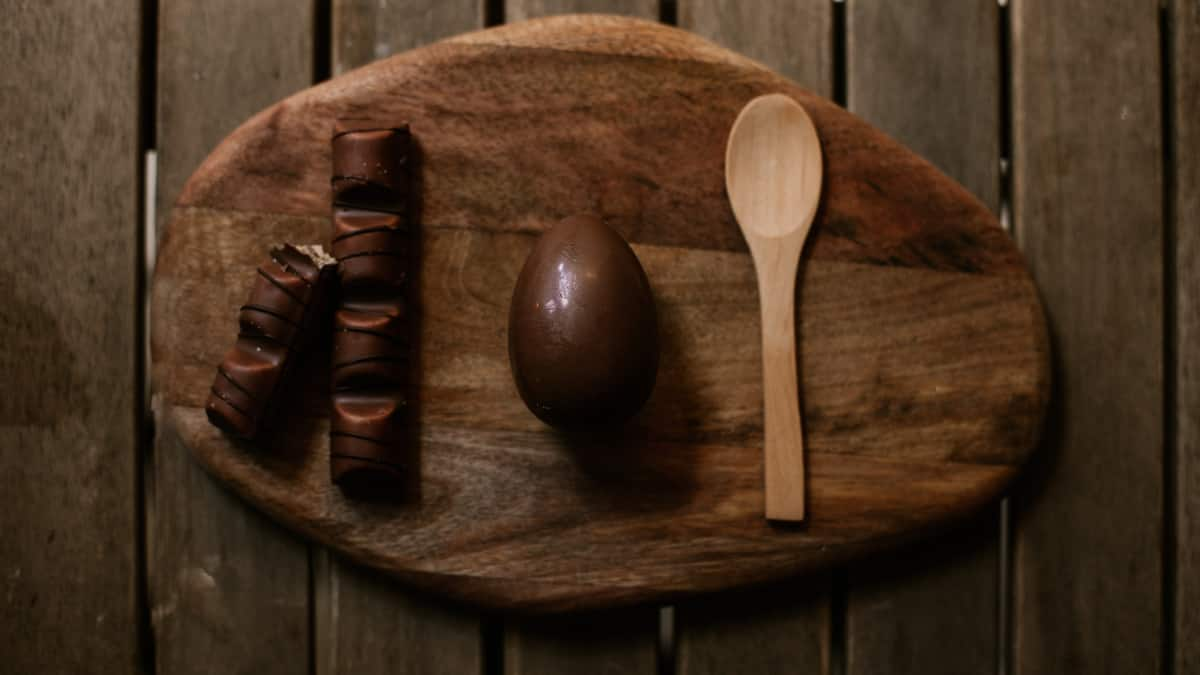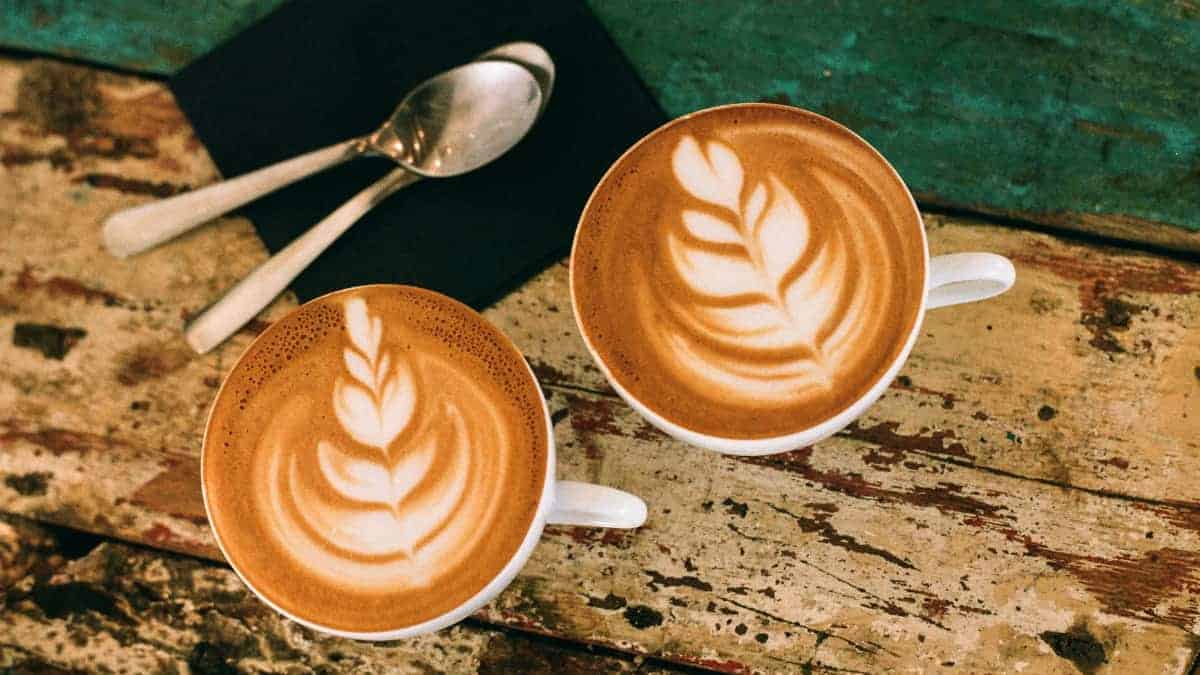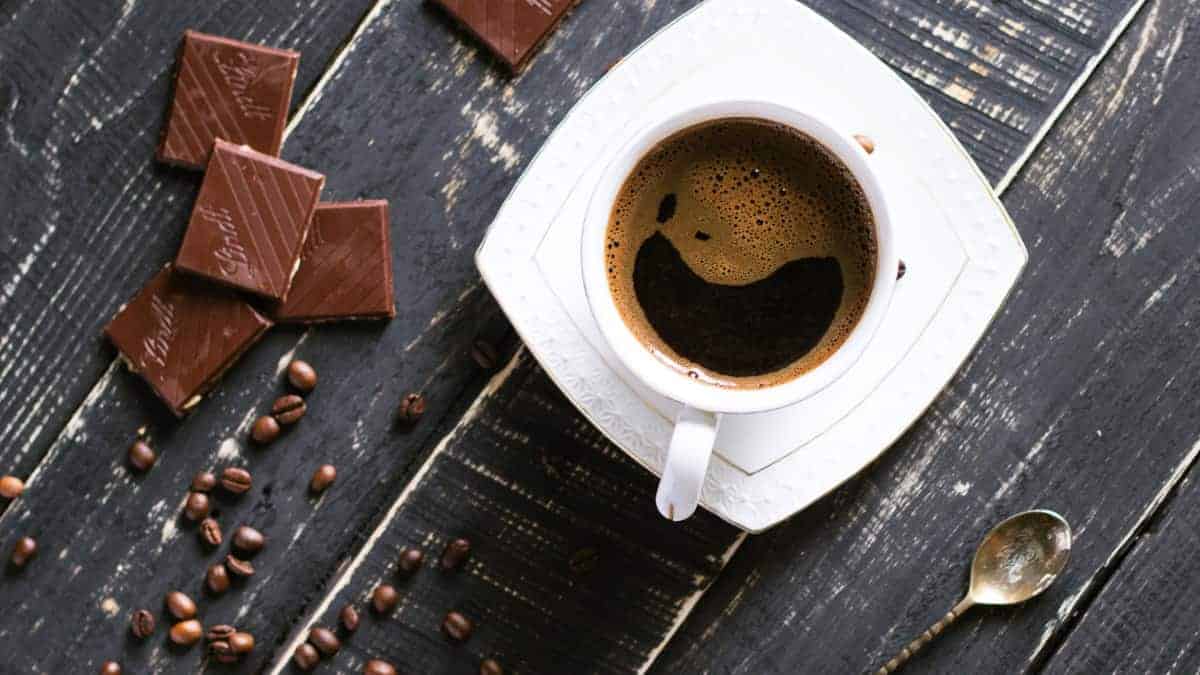Caffeine in Chocolate VS Coffee
Caffeine is a naturally occurring stimulant that can increase energy, alertness, and mood. But too much caffeine can turn you into a jittery, anxious mess.
Struggling with the negative effects of caffeine? Then you need to know how much caffeine is in your diet.
You can find caffeine in more than 60 different plants and berries. Coffee beans are the most famous source. But did you know that cacao beans also contain caffeine?
Before you eat that late-night chocolate, let’s look at the caffeine in chocolate vs coffee.

Key Takeaways
- Coffee contains far more caffeine than chocolate on a serving-by-serving basis.
- Chocolate might be a better caffeine option for people who want a milder energy boost.
- Chocolate, unlike coffee, contains theobromine.
Where Does the Caffeine in Chocolate Come From?
The caffeine in chocolate comes from the seeds (commonly referred to as cocoa beans) of the cocoa pods. Each pod contains roughly 30-40 cocoa beans.
That may sound like a lot. But it takes about 400 dried beans to make one pound of chocolate.
The caffeine content varies from cocoa bean to cocoa bean. Each bean has between 0.1% and 0.7% caffeine. The skin of the cocoa bean can also contain a small amount of caffeine — around 0.05% to 0.3% concentration.
But you don’t eat whole cocoa beans when you eat a chocolate bar.
To make chocolate, the skin and outer layers of the cocoa bean are removed. This results in a cocoa nib, which is where the caffeine found in chocolate resides.
Cocoa nibs are ground up to make chocolate. The more nibs in the chocolate, the darker the chocolate. The darker the chocolate, the higher the caffeine content will be.
The other component extracted from the cocoa bean is cocoa butter. Cocoa butter differs in that it has no caffeine content whatsoever.
Cocoa butter is mixed with cocoa nibs to produce milk chocolate. And this butter is the sole cocoa-derived ingredient in white chocolate.
How Much Caffeine Is in Chocolate?

There is generally less caffeine in chocolate vs coffee. The exact difference varies depending on the type of chocolate. The main factor is how many cocoa nibs, or cocoa solids, are used in the chocolate production.
Let’s take a look at approximately how many milligrams of caffeine there are in a few typical kinds of chocolate per 3.5 ounces.
- Unsweetened baking chocolate: 88 milligrams of caffeine
- Very dark chocolate (80% cocoa): 80 milligrams of caffeine
- Dark chocolate (between 60 and 69%): 65 milligrams of caffeine
- Semi-dark chocolate (between 45 and 59% cocoa): 43 milligrams of caffeine
- Milk chocolate: 20 milligrams of caffeine
- Cocoa powder contains 230 milligrams of caffeine.
Although not a chocolate bar, hot chocolate has about 9 milligrams per 8-ounce cup.
Remember, white chocolate only uses cocoa butter, not cocoa nibs. So it is naturally caffeine-free.
Caffeine content can also vary by the type of cocoa bean. Say you buy some 75% dark chocolate bars made from South American cocoa beans. A 3.5-ounce bar could have upwards of 110 milligrams of caffeine!
Different kinds of hot chocolate can have different caffeine levels as well.
Hot chocolate made with milk chocolate will have less caffeine. One made with cocoa powder will have more. The amount of chocolate used to make hot chocolate will also impact caffeine levels.
Related Read: Caffeine In Chocolate Espresso Beans
How Much Caffeine Is in Coffee?

Like chocolate, the caffeine in coffee also varies. Bean type, roast profile, and brew method are the main influencers.
Arabica coffee beans are more widely used than harsh-tasting robusta beans. But of the two, robusta coffee beans contain more caffeine. Per bean, robusta typically contains 2.5% caffeine, with arabica coming in at 1.7% caffeine.
The roast profile also affects caffeine content, albeit to a lesser degree. Prolonged heat exposure does break down some of the caffeine molecules in coffee beans.
But it’s actually how you measure the coffee that influences the caffeine content.
Coffee beans lose weight but gain volume during the roasting process. So if you measure your coffee per volume, darker roasts have a lower caffeine content. If you measure by weight, the opposite becomes true.
Confused? Don’t worry. The difference isn’t as significant as that caused by the brew method.
The brew method refers to how water extracts delicious java flavors from coffee grounds.
Let’s look at the approximate caffeine content in brew methods. (Other than espresso, assume each measurement is per 8-oz cup.)
- Espresso (single shot): 80 mg of caffeine
- Decaffeinated espresso (single shot): 7.5 mg of caffeine
- Brewed coffee: 120 mg of caffeine
- Decaffeinated coffee: 8 mg of caffeine
- Instant: 62 mg of caffeine
- Pour over: 145 mg of caffeine
- French press: 170 mg of caffeine.
- Cold brew: 200 mg of caffeine
What about espresso-based drinks like lattes, cappuccinos, and flat whites? These drinks typically contain one or two shots of espresso. So their caffeine content usually rests between 80 and 160 mg.
French press and cold brewed coffee have longer water-to-grounds contact time. Thus they have more caffeine.
Keep in mind that these values are only estimates. The coffee freshness, water temperature, brew time, and more can impact caffeine content.
How Much Caffeine in Coffee VS Chocolate?

How does the caffeine content in chocolate compare to that of coffee?
Well, a typical 8-ounce cup of hot chocolate contains around 9 mg of caffeine. The same-sized cup of brewed coffee contains about 120 milligrams of caffeine. In other words, almost 12 times that of hot chocolate.
Chocolate comes closer to coffee-like caffeine when we start talking about dark chocolate.
Just 3.5 ounces of very dark chocolate contains about the same amount of caffeine as a single shot of espresso. And 3.5 ounces of moderately dark chocolate contains roughly the same as an 8-ounce cup of instant coffee.
That amount of milk chocolate contains only a quarter of the caffeine in a single shot of espresso.
Keep in mind, 3.5 ounces is roughly the weight of an entire bar of chocolate. It’s unlikely that you’re going to consume that much dark chocolate in one sitting.
Here’s another important thing to note. Unlike coffee, chocolate contains a chemical called theobromine.
In fact, chocolate contains about 12 times more theobromine than caffeine. So what is theobromine, and how does it affect us? Theobromine, like caffeine, is part of the methylxanthine chemical family. When you eat theobromine, it will bind to your adenosine receptors, blocking adenosine.
Adenosine calms you down and can make you feel sleepy. So guess what theobromine does when it blocks those adenosine receptors? It makes you feel more alert.
Compared to caffeine, theobromine is much less intense.
It fails to breach the blood-brain barrier as often as caffeine does. So theobromine increases alertness while also promoting subtle relaxation. Compare this to the jittery focus caffeine can often induce.
Wrapping Up: Chocolate vs Coffee Caffeine Content
There’s no contest when comparing the caffeine in chocolate vs coffee. Per serving, coffee has much more caffeine than chocolate.
As a general rule, the darker the chocolate, the more caffeine. This is because more cocoa nibs are used to produce darker chocolate.
Even so, dark chocolate bars fail to reach the caffeinated heights of coffee.
The caffeine content of coffee varies as well. Bean type, roast profile, and brew method all impact caffeine concentration in coffee.
While chocolate has less caffeine, it also contains high levels of theobromine. Theobromine is a chemical from the same family as caffeine. It can provide relaxed alertness when consumed.
For the best of both worlds, combine the two treats: chocolate-covered espresso beans!
Frequently Asked Questions
Is chocolate higher in caffeine than coffee?
Chocolate does not usually contain more caffeine than coffee on a per-serving basis.
Is there a lot of caffeine in chocolate?
Chocolate does not contain a lot of caffeine. A dark chocolate bar contains more caffeine than a milk chocolate bar. The type of cocoa beans used can also impact how much caffeine is in the final product.
How much chocolate equals a cup of coffee?
Six ounces of dark chocolate gives you roughly the same caffeine as an 8-ounce cup of brewed coffee. You’d have to drink about 12 cups of hot chocolate to get the same caffeine as just one cup of brewed coffee.
Can caffeine in chocolate keep you awake?
Caffeine in chocolate can keep you awake. But it really comes down to your sensitivity to caffeine, how much chocolate you eat, and when you eat it.

